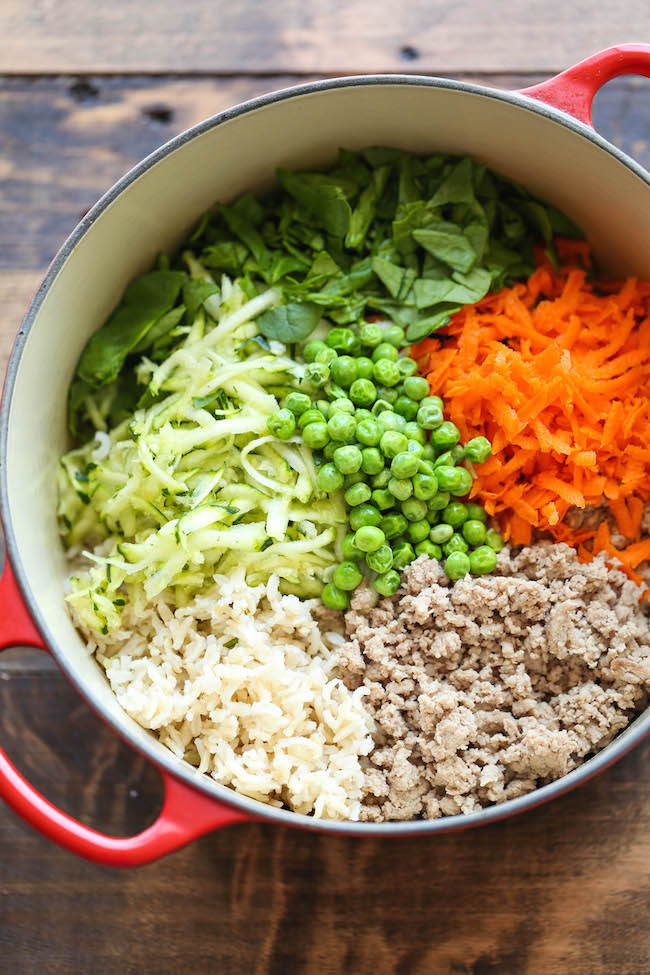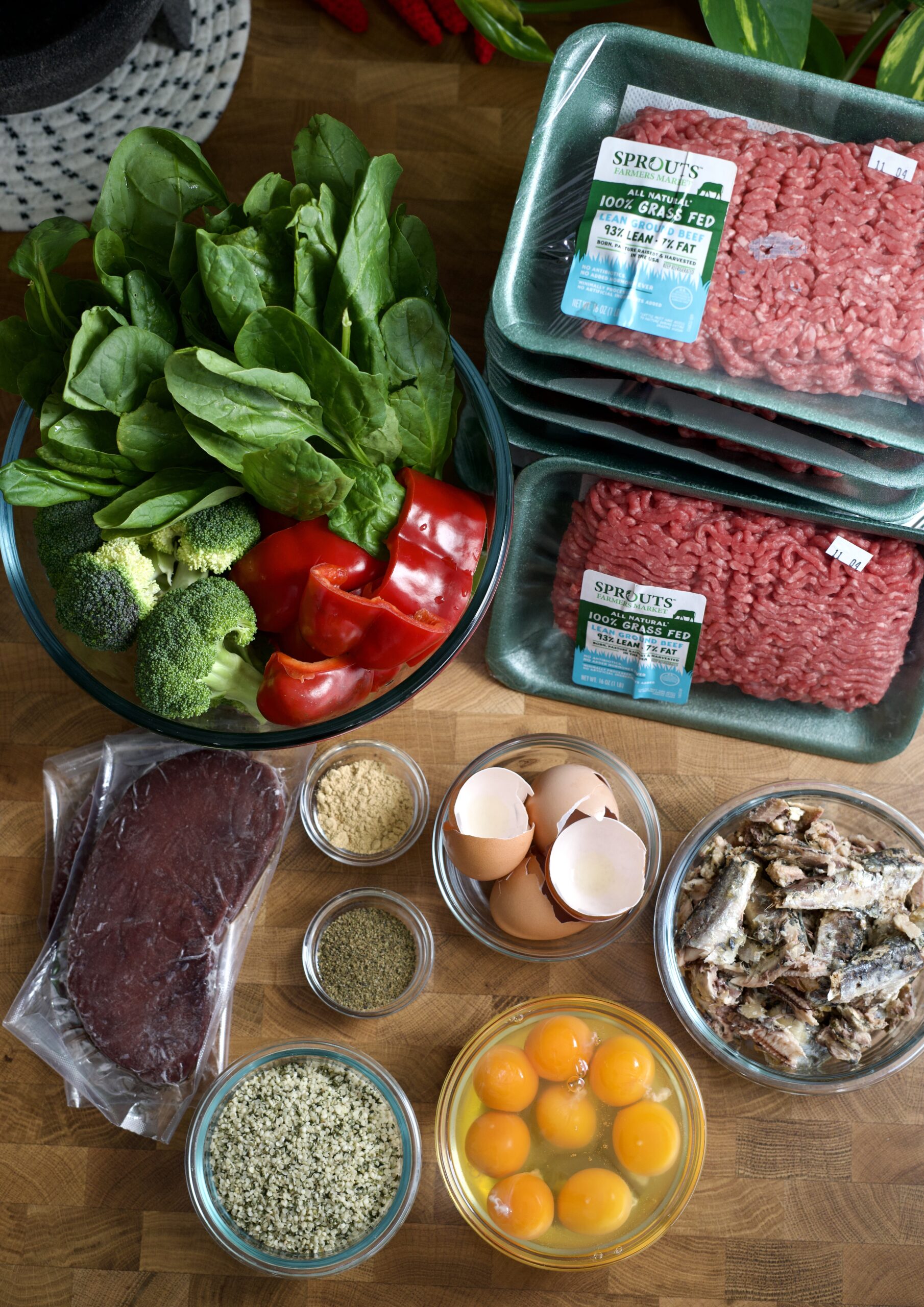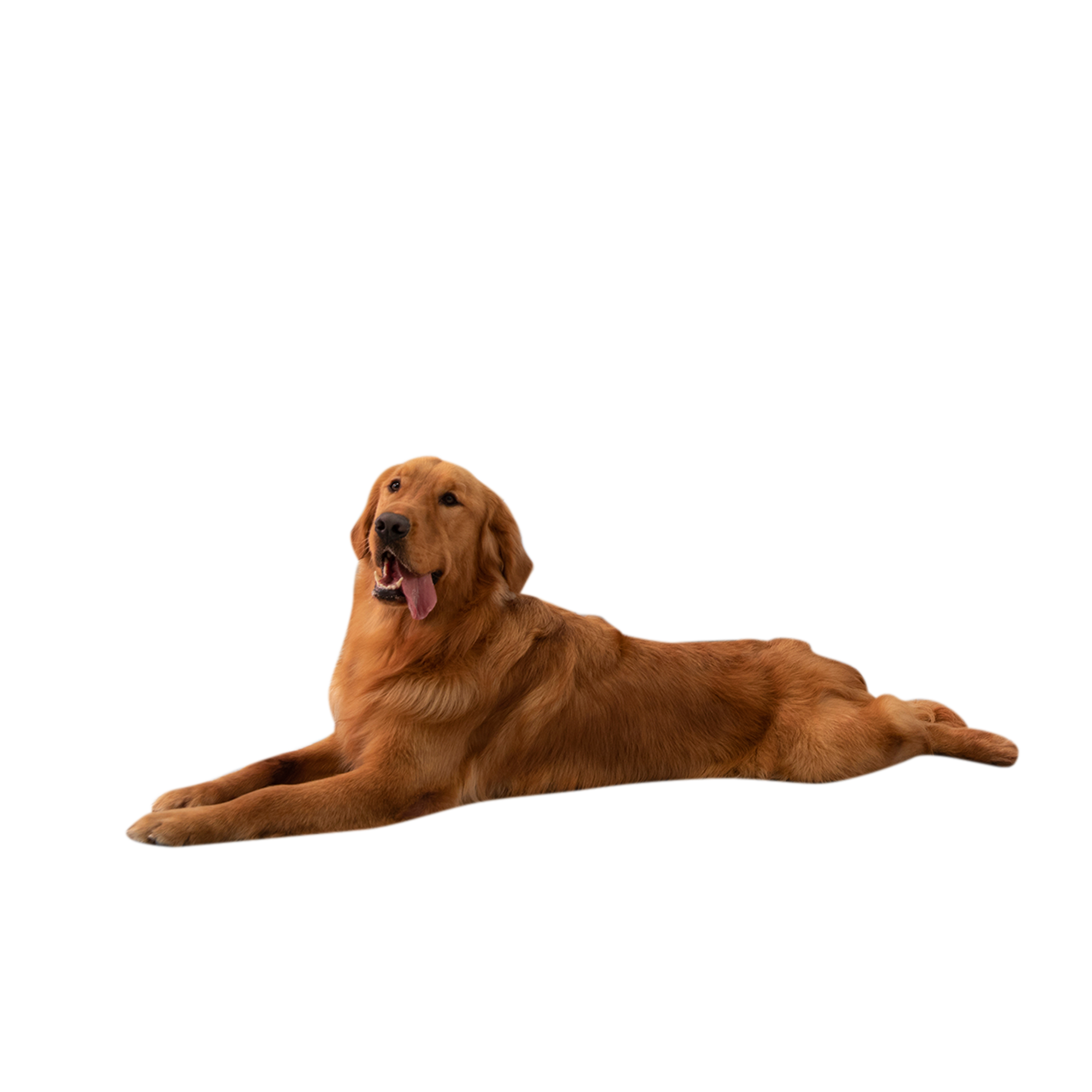Making your own dog food can cost from $1 to $2.50 per pound, depending on ingredients and recipe complexity. Many dog owners find this to be a cost-effective and healthier alternative to store-bought options.
Creating homemade dog food allows you to control the quality of ingredients, ensuring they are fresh and wholesome for your furry friend. With the rising concerns over commercial dog food safety and quality, more pet parents are turning to homemade options as a way to provide a balanced and nutritious diet for their canine companions.
By understanding the cost factors involved in making your own dog food, you can budget effectively and prioritize your pet’s health and well-being.

Credit: damndelicious.net
Benefits Of Making Your Own Dog Food
Creating your own dog food provides cost savings and healthier ingredients, offering long-term benefits for your beloved pet’s overall well-being. By making carefully curated meals at home, you can adjust ingredients to suit your dog’s dietary needs while controlling the quality and cost of the food.
| Making your own dog food allows for nutritional control. |
| You can ensure that quality ingredients are used. |
| Cost savings can be significant compared to commercial options. |

Credit: stellanspice.com
Understanding The Costs
Understanding the costs of making your own dog food involves considering the ingredients and equipment needed. The cost of ingredients can vary based on the quality and availability. Some common ingredients include meat, vegetables, grains, and supplements. Depending on your preferences and your dog’s needs, the cost can vary. Additionally, organic and specialty ingredients may be more expensive.
Equipment is another factor to consider. You may need a food processor, blender, or food grinder to prepare the ingredients. The cost of these tools can vary depending on their quality and brand. You may also need storage containers to keep the food fresh.
Overall, the cost of making your own dog food can range from affordable to more expensive based on the ingredients and equipment you choose. It’s essential to consider your budget and your dog’s dietary needs when determining the costs.
Budget-friendly Tips
When it comes to making your own dog food, it’s important to consider the cost. To stay within your budget, there are some tips you can follow.
Bulk Buying: Purchasing ingredients in bulk can help you save money in the long run. Look for sales or consider joining a wholesale club to get discounts on items like meat, grains, and vegetables.
Meal Planning: Planning your dog’s meals in advance can help you save money by avoiding unnecessary purchases. Create a weekly or monthly meal plan and make a shopping list accordingly.
Avoiding Wastage: Be mindful of not wasting food. Only prepare the amount that your dog will eat, and store leftovers properly to maintain freshness. Consider freezing portions for future use.
By following these budget-friendly tips, you can make your own dog food without breaking the bank and ensure that your furry friend gets the nutrition they need.
Real-life Budget Breakdown
Making your own dog food can be a cost-effective alternative to buying commercial options. Let’s delve into a cost analysis of both approaches and understand how making homemade dog food stacks up against commercial options in terms of expenses.
Commercial Dog Food: Commercial dog food prices can vary depending on various factors such as size, brand, and quality. On average, a high-quality brand can cost around $2 per pound, while medium-quality options can cost around $1 per pound. For a large dog requiring 1 pound of food per day, this can total up to $60-$720 per year.
Homemade Dog Food: Preparing dog food at home allows you to have control over the ingredients and their quality. On average, homemade dog food can cost around $2-$5 per pound, depending on the quality of ingredients and sourcing. While this may seem more expensive than commercial options, it’s important to note that homemade food often requires smaller serving sizes due to its higher nutritional content. This means that although the upfront cost may be higher, the overall quantity required may be lesser, resulting in potential long-term savings.
In conclusion, while the initial cost of making your own dog food may be higher compared to commercial alternatives, the long-term savings and the ability to provide your furry friend with high-quality, nutritious meals are some of the advantages that make homemade dog food financially viable.
Quality Check: Ensuring Nutritional Balance
Making your own dog food can be a cost-effective and nutritious option for your furry friend. Consulting a veterinarian before making the switch is crucial to ensure that your dog’s specific nutritional needs are met. Balancing macronutrients such as proteins, carbohydrates, and fats is essential to maintain your dog’s overall health. Additionally, proper portion control and regular quality checks will help safeguard the nutritional balance of the homemade food. Ensuring that vitamins and minerals are included in the recipe is important for your dog’s well-being and can save on potential veterinary bills in the long run.
Common Pitfalls To Avoid
Making your own dog food can be cost-effective and beneficial for your pet’s health. However, there are common pitfalls to avoid. Overcomplicating recipes can lead to unnecessary expenses and time commitment. It’s important to find simple yet nutritious recipes that provide the essential nutrients your dog needs. Additionally, not accounting for supplements can result in nutritional imbalances, affecting your dog’s health. Therefore, it’s crucial to consult a vet or a qualified animal nutritionist to ensure that the homemade food meets your dog’s dietary needs.
Storing Homemade Dog Food Safely
Making your own dog food costs vary based on the ingredients used. Storing dog food safely is crucial. Use airtight containers to maintain freshness. Consider refrigerating daily portions for short-term storage. Freeze homemade dog food for a longer shelf life. Proper containers and freezing methods preserve the food’s quality. Always follow safe food handling practices to prevent contamination.

Credit: www.acupfullofsass.com
Frequently Asked Questions
Is It Cheaper To Make Dog Food Yourself?
Yes, making dog food at home can be cheaper than buying commercial brands. You can control the ingredients and quality. But consult a vet to ensure nutritional balance.
How Much Does It Cost To Feed Homemade Dog Food?
The cost of feeding homemade dog food varies but can range from $1. 50 to $3 per day. Factors such as the size of the dog and the ingredients used will influence the overall cost. It’s important to consult with a vet to ensure your dog’s nutritional needs are met.
How Much Homemade Dog Food For 60 Lb Dog?
For a 60 lb dog, you should feed homemade dog food according to their weight and activity level. A general guideline is to provide 2-3% of their body weight in food per day. So, a 60 lb dog would need approximately 1.
2-1. 8 pounds of homemade dog food daily. However, consult with a veterinarian for specific dietary recommendations.
Do Vets Recommend Making Your Own Dog Food?
Veterinarians may or may not recommend making homemade dog food. Consult your vet for personalized advice.
Conclusion
Making your own dog food can be a cost-effective and nutritious option for your furry friend. By incorporating fresh, wholesome ingredients, you can customize meals according to your dog’s specific dietary needs. With proper research and guidance, creating homemade dog food can be a rewarding and affordable choice.

Hi, I’m Olivia Davis. I am a certified nutritionist with a love for dogs that knows no bounds. At Dog Advisor Pro, I provide extensive insight into dog nutrition. A healthy diet is fundamental to a dog’s well-being and aims to empower dog owners with the knowledge they need to make informed choices about their furry friend’s diet. My goal is to make the field of dog nutrition easy and enjoyable for every pet parent.


